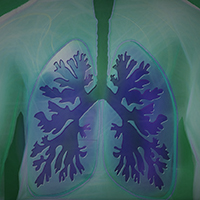Continuous positive airway pressure therapy in the management of hypercapnic cardiogenic pulmonary edema

Submitted: December 8, 2020
Accepted: February 24, 2021
Published: April 1, 2021
Accepted: February 24, 2021
Abstract Views: 4424
PDF: 1318
Publisher's note
All claims expressed in this article are solely those of the authors and do not necessarily represent those of their affiliated organizations, or those of the publisher, the editors and the reviewers. Any product that may be evaluated in this article or claim that may be made by its manufacturer is not guaranteed or endorsed by the publisher.
All claims expressed in this article are solely those of the authors and do not necessarily represent those of their affiliated organizations, or those of the publisher, the editors and the reviewers. Any product that may be evaluated in this article or claim that may be made by its manufacturer is not guaranteed or endorsed by the publisher.
Similar Articles
- Abdalla Eltayeb, Shahid Khan, Salam Dib, Ali Musthaq, Ahmed Elshaer, Abdullah Shaik, Domenico Galzerano, Bahaa Fadel, Mohamed Aladmawi, Olga Vriz, Three-dimensional printing in integrated multi-modality imaging approach for management of prosthetic valves infective endocarditis , Monaldi Archives for Chest Disease: Vol. 93 No. 4 (2023)
- Bruno Balbi, Claudio Marcassa, Fabrizio Pisani, Giacomo Corica, Antonio Spanevello, Integrated care of chronic degenerative non-communicable diseases and rehabilitation: the odd couple? , Monaldi Archives for Chest Disease: Vol. 87 No. 1 (2017)
- Sumita Agrawal, Akhil Dhanesh Goel, Nitesh Gupta, Ayush Lohiya, Role of low dose computed tomography on lung cancer detection and mortality - an updated systematic review and meta-analysis , Monaldi Archives for Chest Disease: Vol. 93 No. 1 (2023)
- Matteo Bonini, Paolo Palange, Roflumilast is safe and effective in improving symptoms and lung function in severe COPD , Monaldi Archives for Chest Disease: Vol. 79 No. 3-4 (2013): Pulmonary series - Supplement 1
- Maria Vincenza Polito, Mario Ferraioli, Alessandra Nocilla, Guido Coppola, Federica D’Auria, Antonio Marzano, Luca Barnabei, Marisa Malinconico, Eduardo Bossone, Francesco Ferrara, CHARGE syndrome and congenital heart diseases: systematic review of literature , Monaldi Archives for Chest Disease: Vol. 94 No. 3 (2024)
- Domenico Galzerano, Claudio Pragliola, Mohamed Al Admawi, Mario Mallardo, Sara Di Michele, Carlo Gaudio, The role of 3D echocardiographic imaging in the differential diagnosis of an atypical left atrial myxoma , Monaldi Archives for Chest Disease: Vol. 88 No. 3 (2018)
- C. Robalo Cordeiro, S. Freitas, B. Rodrigues, A. Catarino, M.J. Matos, I. Ferreira, L. Carvalho, Diagnosis of Respiratory Bronchiolitis associated interstitial lung disease , Monaldi Archives for Chest Disease: Vol. 65 No. 2 (2006): Pulmonary series
- A. Brunelli, C. Pompili, M. Salati, Low-technology exercise test in the preoperative evaluation of lung resection candidates , Monaldi Archives for Chest Disease: Vol. 73 No. 2 (2010): Pulmonary series
- Maurizio Giuseppe Guarneri, Laura Nastri, Pasquale Assennato, Angela Li Puma, Arianna Landi, Barbara Bonanno, Giovan Battista Maggì, Giuseppe Annino, Filippa Bono, Daniele La Barbera, Heart ischemia and psychosomatics: the role of stressful events and lifestyles , Monaldi Archives for Chest Disease: Vol. 72 No. 2 (2009): Cardiac series
- I.P. Neuringer, S.H. Randell, Lung Stem Cell Update: Promise and Controversy , Monaldi Archives for Chest Disease: Vol. 65 No. 1 (2006): Pulmonary series
<< < 11 12 13 14 15 16 17 18 19 20 > >>
You may also start an advanced similarity search for this article.

 https://doi.org/10.4081/monaldi.2021.1725
https://doi.org/10.4081/monaldi.2021.1725





